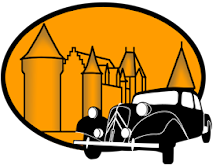Scientific Name: Pararge aegeria.
English Name: Speckled Wood.
French Name: Le Tircis.

5 Key Characters:
Habitat: All wooded, scrubby and suburban locations and the fringes of such habitat. They occupy patches of sunlight in clearings, along forest tracks and woodland fringes.
Flight Period: January-February-March-April-May-June-July-August-September-October-November.
Caterpillar: small and green, May to March, overwinters as either a caterpillar or a chrysalis.
Host Plant: Pasture grasses (Annual Meadow Grass Poa annua, Bulbous Bluegrass P. bulbosa, Smooth Meadow Grass P. pratensis) and other grasses of nearby habitats (False Brome Brachypodium sylvaticum, Tor Grass B. pinnatum, Giant Fescue Festuca gigantea, Cocksfoot Dactylis glomerata, Wood Small Reed Calamagrostis epigejos, Rough Small Reed C. arundinacea, Black Bent Agrostis gigantea, Purple Moor Grass Molinia caerulea, Tufted Hair Grass Deschampsia cespitosa) and Wood Sedge Carex sylvatica.
Status: One of the top 10 most widely distributed species in France and very common in both natural and manmade woodland (including parks and gardens).
References and Further Reading:
Les Papillons de jour de France, Belgique et Luxembourg et leur chenilles by Tristan Lafranchis, one of the very thorough Parthenope Collection field guides published by Biotope. Each species has a page, with description, life cycle, photos and distribution map.
Photographed by Loire Valley Nature:
All photos will enlarge in a new window if you click on them. Row 1 Left female on a wooded farm track in the Brenne, May.
English Name: Speckled Wood.
French Name: Le Tircis.
5 Key Characters:
- upperside dark brown with tawny orange (fauve) spots.
- a black eyespot with a white centre near the tip of the forewing and several along the edge of the hindwing.
- males can be distinguished from females because they have a 'sex mark' of downy brown which crosses the forewing, and the eyespots on the hindwing are clearly separate from one another.
- the underside of the hindwing is brown with purply grey eyespots.
- males are extremely territorial and are very frequently encountered fighting in patches of sunlight in woodland clearings.
Habitat: All wooded, scrubby and suburban locations and the fringes of such habitat. They occupy patches of sunlight in clearings, along forest tracks and woodland fringes.
Flight Period: January-February-March-April-May-June-July-August-September-October-November.
Caterpillar: small and green, May to March, overwinters as either a caterpillar or a chrysalis.
Host Plant: Pasture grasses (Annual Meadow Grass Poa annua, Bulbous Bluegrass P. bulbosa, Smooth Meadow Grass P. pratensis) and other grasses of nearby habitats (False Brome Brachypodium sylvaticum, Tor Grass B. pinnatum, Giant Fescue Festuca gigantea, Cocksfoot Dactylis glomerata, Wood Small Reed Calamagrostis epigejos, Rough Small Reed C. arundinacea, Black Bent Agrostis gigantea, Purple Moor Grass Molinia caerulea, Tufted Hair Grass Deschampsia cespitosa) and Wood Sedge Carex sylvatica.
Status: One of the top 10 most widely distributed species in France and very common in both natural and manmade woodland (including parks and gardens).
References and Further Reading:
Les Papillons de jour de France, Belgique et Luxembourg et leur chenilles by Tristan Lafranchis, one of the very thorough Parthenope Collection field guides published by Biotope. Each species has a page, with description, life cycle, photos and distribution map.
Photographed by Loire Valley Nature:
All photos will enlarge in a new window if you click on them. Row 1 Left female on a wooded farm track in the Brenne, May.

 |
| Female. |
 |
| Female. |
 |
| Female. |
 |
| Female. |






No comments:
Post a Comment